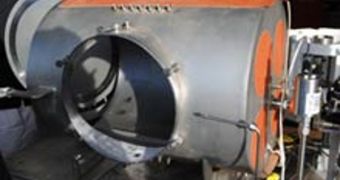Experts from the US Department of Energy (DOE) Sandia National Laboratories (SNL) announce the development of a device that is able to convert carbon dioxide and water into the building blocks of fuel, through nothing more than the action of sunlight. With this achievement, it may be possible in the near future to turn the dejections of power plants and automobiles back into gasoline, petrol and diesel, without the need for additional amounts of these to be produced, and pollute the world even further, Technology Review informs.
With a lot of work, the “Sunshine to Petrol” system may become up to twice as effective as photosynthesis, which would be a monumental achievement. At this point, the process that allows plants to live off the Sun and water has a few billion years of head-start, so catching up would be proof of human ingenuity and intelligence. SNL experts have been developing the technology for a while now, but, until only recently, they've only done so on small batches, inside the confines of the lab. With the new device, they are entering a new era of practical applications, which could see innovations spur in many fields of research.
“This is a first-of-its-kind prototype we're evaluating,” the inventor of the new scientific instrument, SNL researcher Rich Diver, explains. “In the short term we see this as an alternative to sequestration,” SNL Advanced Materials Laboratory chemical engineer James Miller, who has also been part of the research, adds. The latter scientist proposes the idea of reverse combustion. Rather than CO2 being stored and pumped underground, sunlight – an abundant resource all over the world – can and should be used to obtained further fuels, thus eliminating the need for additional barrels of oil and gas to be pumped out of the ground.
According to Miller, the same technology underlying the prototype – the Counter-Rotating-Ring Receiver Reactor Recuperator (CR5) – could, in theory, be used to produce hydrogen. The cylindrical metal machine concentrates sunlight inside, where iron-rich materials are made to give away, and then collect molecules of oxygen. Complex chemical reactions then change the composition of the carbon dioxide, turning it into gasoline-like compounds, which could be used to power up vehicles and emergency generators, the SNL team says.

 14 DAY TRIAL //
14 DAY TRIAL //